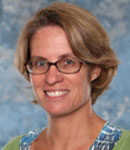»Life and Environmental Sciences Faculty
To search for a specific faculty member, please visit our searchable faculty directory.
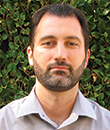
Hagop Atamian, Ph.D.
Assistant Professor, Biological Sciences
atamian@chapman.eduRESEARCH INTERESTS
Dr. Atamian’s research interests broadly aim at understanding the molecular mechanisms
of plant interactions with the environment. These include biotic interactions (insects,
bacteria, fungi, nematodes) and various biotic stresses (drought, cold, heat) as well
as daily environmental fluctuations. He uses high throughput sequencing and molecular
approaches together with physiological field experiments to better understand plant
genotype x environment interactions.
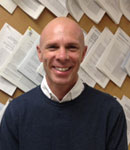
Marco Bisoffi, Ph.D.
Associate Professor, Molecular Biology
Co-Director, Chemistry and Biochemistry
bisoffi@chapman.eduRESEARCH INTERESTS
Dr. Bisoffi’s research program encompasses two major domains: First, the study of
field cancerization, in particular in prostatic tissues. Specific projects include
the elucidation of molecular mechanisms of field cancerization in cell and animal
models; the use of markers of field cancerization as indicators of disease; and the
exploration of mediators of field cancerization as therapeutic targets. Second, the
testing of natural product based experimental therapeutics with a focus on reactive
oxygen species generation and target protein degradation in cancer cell and animal
models.
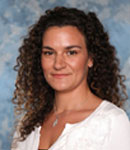
Georgiana Bostean, Ph.D.
Assistant Professor, Environmental Science, Health and Policy
gbostean@chapman.eduRESEARCH INTERESTS
Dr. Bostean’s research is in the area of population health and health disparities,
focusing on the social determinants of health. Her research has examined issues such
as how family relationships impact health, and reasons for race-ethnic and nativity
disparities in health. Recent publications explore the roles of selective migration,
and socioeconomic factors, in explaining differences in health behaviors and outcomes
between the U.S.-born and immigrants. Dr. Bostean has been supported by grants from
the National Science Foundation and UC Office of the President, and her research published
in journals including Journal of Immigrant and Minority Health, Annals of Epidemiology,
and Cancer Prevention & Control.
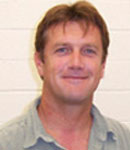
Warren de Bruyn, Ph.D.
Professor, Chemistry
debruyn@chapman.eduRESEARCH INTERESTS
Current research is focused on the oceanic cycling of sulfur species and oxygenated
hydrocarbons into or out of the troposphere which have implications for global climate
change and the oxidative capacity of the troposphere. This work involves instrument
development, laboratory kinetic measurements, coastal field measurements and open
ocean measurements.
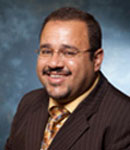
Hesham El-Askary, Ph.D.
Professor, Remote Sensing and Earth System Sciences
Director, Computational and Data Sciences Program
elaskary@chapman.eduRESEARCH INTERESTS
Dr. El-Askary’s research interests center studying the interactions and ongoing processes
between the Earth’s various spheres, namely atmosphere, hydrosphere, biosphere and
cryosphere. Specific projects under investigation include the impact of natural and
anthropogenic aerosols on: cloud microphysics, hurricanes, human health, local climate
as well as change detection analysis of different marine habitats stressed by local
climate variability, studying global impacts on a local scale spatially and temporally
with emphasis on using dimension reductions algorithms to asses handling big data.
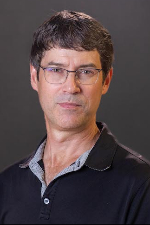
Douglas S. Fudge, Ph.D.
Associate Professor of Biology
fudge@chapman.eduRESEARCH INTERESTS
Dr. Fudge’s research aims to understand the biophysics of marine animals, with a focus
on processes such as predator defense, feeding, and locomotion. Current projects aim
to understand predator-prey interactions between hagfishes and sharks, the function
and biogenesis of hagfish slime, and the development of biomimetic applications inspired
by hagfish slime.
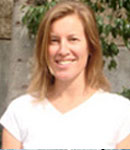
Jennifer Funk, Ph.D.
Associate Professor, Biological Sciences
Director, Biological Sciences Program
jfunk@chapman.eduRESEARCH INTERESTS
Dr. Funk’s research explores how plant biochemical and physiological traits drive
ecological processes such as invasion, community assembly, and nutrient cycling. Her
current research projects focus on identifying characteristics of invasive plant species
and using that information to restore native plant communities. She is particularly
interested in how invasive species out-compete native species for resources in arid
and nutrient-poor habitats. She has worked extensively in Hawaii and her current research
focuses on comparing native and invasive species in all five Mediterranean-climate
ecosystems including Western Australia.
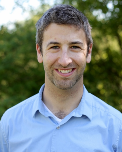
Gregory R. Goldsmith, Ph.D.
Assistant Professor of Biological Sciences and Director of the Grand Challenges Initiative
goldsmit@chapman.eduRESEARCH INTERESTS
Dr. Goldsmith’s research interests are focused on understanding the implications of
climate change for tropical forest function, particularly with respect to water and
carbon cycling. His research uses observational and experimental approaches from plant
physiological, community and ecosystem ecology, as well as stable isotope biogeochemistry.
Goldsmith also has a longstanding interest in implementing and assessing innovative
approaches to engaging broader audiences in science through educational technology.
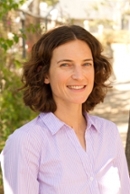
Rosalee Hellberg, Ph.D.
Associate Professor, Food Science
hellberg@chapman.eduRESEARCH INTERESTS
Dr. Hellberg’s research is focused on food safety and mislabeling. On the food safety
side, she investigates the effects of climate change on food safety, specifically
with regard to food microbiology, and she works on the development of molecular methods
for the identification and differentiation of foodborne pathogens. On the food mislabeling
side, she develops and applies molecular methods to identify instances of species
substitution or misbranding in a variety of food items.
Specific projects underway include modeling the relationship between climatic factors
in Orange County and human illness from Salmonella, examination of Listeria isolates
for the presence of a gene important in virulence, investigation of game meat mislabeling,
and development of a primer set to perform DNA barcoding on canned fish.
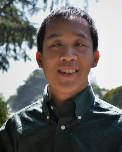
Jeremy Hsu, Ph.D.
Instructional Assistant Professor, Biological Sciences
hsu@chapman.eduTEACHING AND RESEARCH INTERESTS
Dr. Hsu is excited to teach various courses on evolution, ecology, and molecular and
population genetics at Chapman. He is enthusiastic about teaching and science education,
and he is looking forward to working with others in Schmid College to incorporate
active learning and evidence-based instructional practices in the classroom. His teaching
is grounded from his background and interests in the lab. As an evolutionary biologist,
he is broadly interested in exploring how intrinsic factors (e.g. differences in behavior
and demography) and extrinsic factors (e.g. environmental perturbations and ecological
differences) impact the evolution and dynamics of populations over time. His two major
research projects in the past have focused on the population genetics of the monarch
butterfly and the tuco-tuco, a rodent from South America.
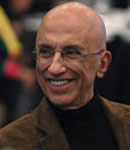
Menas Kafatos, Ph.D.
Professor, Fletcher Jones Endowed Professor of Computational Physics
Director, Center of Excellence in Earth Systems Modeling and Observations
kafatos@chapman.eduRESEARCH INTERESTS
Interdisciplinary Earth system science; Natural hazards and climate change; Aerosols
and pollution; Vegetation and climate change coupling; Tropical cyclones; Distributed
data information system architecture; Content-based Earth science data browsing; Black
holes, active galaxies and quasars; Cosmological redshifts; Foundations of quantum
theory; Quantum theory and brain dynamics.
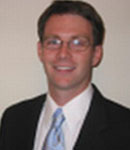
Jason Keller, Ph.D.
Associate Professor, Biological Sciences
Director, Environmental Science and Policy
jkeller@chapman.eduRESEARCH INTERESTS
Dr. Keller’s research explores wetlands ecosystems ranging from northern peatlands
to the salt marshes of southern California. He is particularly interested in how global
change influences wetland carbon cycling and greenhouse gas dynamics. Ongoing research
focuses on soil carbon in restored salt marshes, anaerobic decomposition in peatland
ecosystems, and the role of organic matter in microbial respiration.

Christopher Kim. Ph.D.
Professor, Chemistry
Associate Dean, Academic Programs
cskim@chapman.eduRESEARCH INTERESTS
Particle size dependence on trace metal(loid) concentration, distribution and speciation
in mine wastes; Bioaccessibility and bioavailability of toxic metal(loid)s in contaminated
soils and sediments; Iron oxyhydroxide nanoparticle growth, aggregation, and reaction
mechanisms in aqueous systems; Synchrotron-based spectroscopic and microscopic methods
for mineralogical/geochemical analysis.
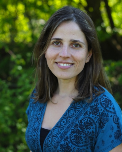
Patricia C. Lopes, Ph.D.
Assistant Professor of Biological Sciences
lopes@chapman.eduRESEARCH INTERESTS
Dr. Lopes is interested in understanding the causes and consequences of animal social
behavior, with an emphasis on disease transmission. Her research integrates several
levels of biological organization, including genes, hormones, the brain, the individual,
and ultimately the dynamics of a whole social group. In her work, Dr. Lopes combines
field and laboratory manipulations, and makes use of behavioral sensors and tracking
technology, as well as a range of molecular and histological techniques.

Cassandra Zalman, Ph.D.
Instructional Assistant Professor in Biological Sciences
Associate Director, Biological Sciences
medvedef@chapman.eduRESEARCH INTERESTS
Dr. Zalman's research interests include understanding mechanistic regulators and interactive
controls on anaerobic microbial decomposition in wetland ecosystems.
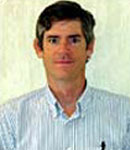
Walter H. Piper, Ph.D.
Professor, Biological Sciences
wpiper@chapman.eduRESEARCH INTERESTS
Dr. Piper is a behavioral ecologist who studies aggressive behavior, use of space,
and habitat selection among territorial birds in the field. He has previously investigated
aggressive interactions among wintering sparrows in North Carolina and cooperative-breeding
wrens in Venezuela. Since 1993, Piper has conducted a longitudinal study focusing
on territory establishment, territory defense and habitat selection in a large, color-banded
population of common loons (migratory, diving birds weighing 4-5 kg) in northern Wisconsin.

Melissa Rowland-Goldsmith, Ph.D.
Associate Professor, Molecular Biology
rowland@chapman.eduRESEARCH INTERESTS
Dr. Rowland-Goldsmith’s research interests center around studying human pancreatic
cancer which is the 4th leading cause of cancer related death in the United States.
The ability of pomegranate juice extract (PJE) to stimulate apoptosis (programmed
cell death) and inhibit cancer cell invasion in several cancer types has been attributed
to its high polyphenol content. Caffeine has also been shown to induce apoptosis in
several cell types. Specific projects under investigation include the study of natural
products (PJE and caffeine) to reduce pancreatic cancer cell proliferation and migration
as well as promoting cell adhesion.
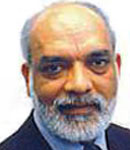
Ramesh Singh, Ph.D.
Professor, Earth and Environmental Sciences
rsingh@chapman.eduRESEARCH INTERESTS
Dr. Singh has carried out extensive studies related to the dynamics of atmospheric
pollution in the northern parts of India and Northeastern parts of China and their
impacts on the Hydrological cycle, Monsoon, Himalayan Glaciers, and Natural Resources.
He found emissions from the Coal based power plants, dust transports from Arabia peninsula
and Crop residue burning impact regional climate systems in India and Asia. Detailed
analysis of satellite data carried out by one of the Undergraduate students, observed
a declining trend in emissions from US coal power plants.
He has used Indian, European and NASA satellite and ground data to understand the
Earthquake processes and coupling between Land, Ocean, Atmosphere and Meteorological
parameters associated with the Natural Hazards (Cyclones/Hurricanes/Typhoons), Earthquakes,
Droughts, Floods and Dust events in India and China. His recent efforts to study Hydrological
response on seismicity observed in China, Mid and Eastern parts of US.
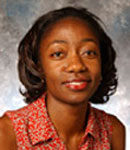
Lilian Were, Ph.D.
Associate Professor, Food Science
were@chapman.eduRESEARCH INTERESTS
Dr. Were’s current research is focused on determining the preservative properties
of phenolic and melanoidin coffee compounds, with the overall goal of enhancing the
shelf life of food. With coffee being the most traded agriculture commodity globally,
coffee provides a readily available source of natural bioactive ingredients. The laboratory
work involves characterizing bioactive compounds in plant based foods e.g. coffee
and determining their effect on chemical and microbial shelf life extension in food.
Dr. Were’s specific training was in protein chemistry having worked on protein based
edible films, plasminogen activators in milk, and antimicrobial encapsulation in liposomes
for enhanced efficacy against bacteria.
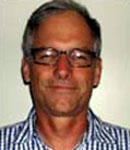
William Wright, Ph.D.
Associate Professor, Biology
wwright@chapman.eduRESEARCH INTERESTS
Dr. Wright’s research interests center around marine invertebrate behavior. Specific
projects include evolution of learning and memory in a gastropod lineage; territorial
behavior, tenacity, and the role of heat events in an intertidal gastropod; chemical
defense in a predator-prey system; effect of marine reserves on predator behavior.

Susan Yang, Ph.D.
Professor, Biological Sciences, Physics, Computational Science and Engineering
kyang@chapman.eduRESEARCH INTERESTS
Computational and Experimental Biology/Neuroscience; Electrophysiology; f-MRI modeling;
Bioinformatics; Health and Pollution.
